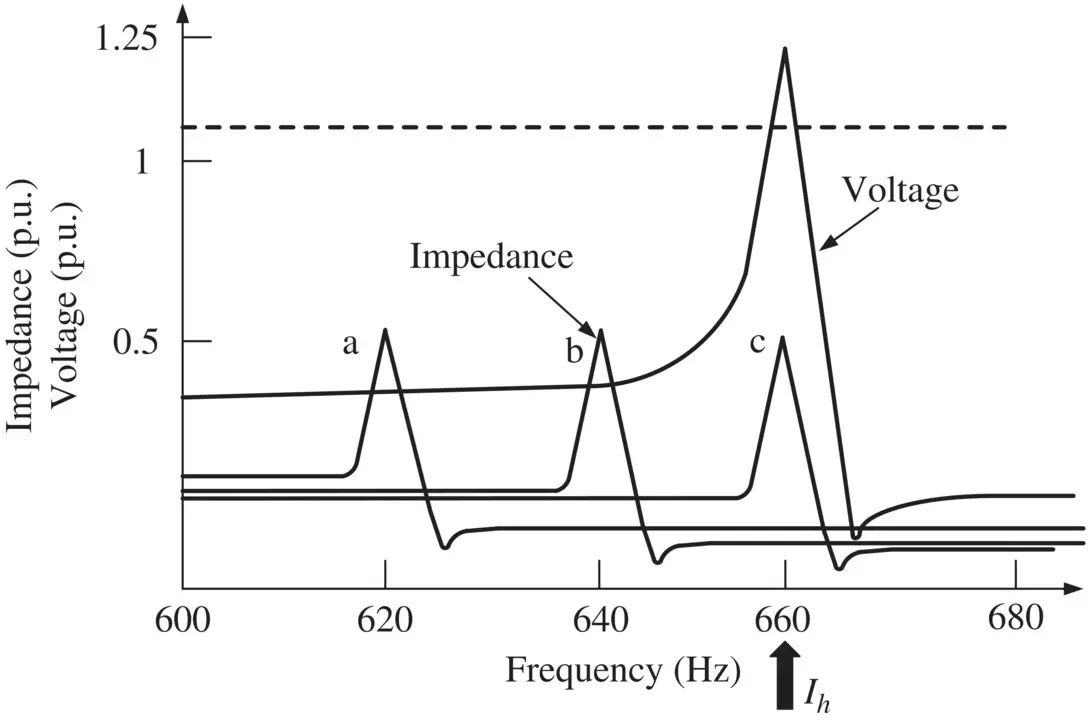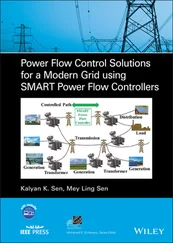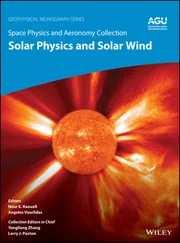Rajiv K. Varma - Smart Solar PV Inverters with Advanced Grid Support Functionalities
Здесь есть возможность читать онлайн «Rajiv K. Varma - Smart Solar PV Inverters with Advanced Grid Support Functionalities» — ознакомительный отрывок электронной книги совершенно бесплатно, а после прочтения отрывка купить полную версию. В некоторых случаях можно слушать аудио, скачать через торрент в формате fb2 и присутствует краткое содержание. Жанр: unrecognised, на английском языке. Описание произведения, (предисловие) а так же отзывы посетителей доступны на портале библиотеки ЛибКат.
- Название:Smart Solar PV Inverters with Advanced Grid Support Functionalities
- Автор:
- Жанр:
- Год:неизвестен
- ISBN:нет данных
- Рейтинг книги:3 / 5. Голосов: 1
-
Избранное:Добавить в избранное
- Отзывы:
-
Ваша оценка:
- 60
- 1
- 2
- 3
- 4
- 5
Smart Solar PV Inverters with Advanced Grid Support Functionalities: краткое содержание, описание и аннотация
Предлагаем к чтению аннотацию, описание, краткое содержание или предисловие (зависит от того, что написал сам автор книги «Smart Solar PV Inverters with Advanced Grid Support Functionalities»). Если вы не нашли необходимую информацию о книге — напишите в комментариях, мы постараемся отыскать её.
Smart Solar PV Inverters with Advanced Grid Support Functionalities
Smart Solar PV Inverters with Advanced Grid Support Functionalities’
Smart Solar PV Inverters with Advanced Grid Support Functionalities — читать онлайн ознакомительный отрывок
Ниже представлен текст книги, разбитый по страницам. Система сохранения места последней прочитанной страницы, позволяет с удобством читать онлайн бесплатно книгу «Smart Solar PV Inverters with Advanced Grid Support Functionalities», без необходимости каждый раз заново искать на чём Вы остановились. Поставьте закладку, и сможете в любой момент перейти на страницу, на которой закончили чтение.
Интервал:
Закладка:
1.2.12 Line Losses
Line I 2 R heating losses are proportional to the current flow in the feeders. If the solar PV systems partially offset the line loading the losses will decrease [54, 55]. It is shown on an AEP network that low to moderate level of solar PV penetration tends to lower the line losses since the power produced by the solar PV systems tends to offset the load, and consequently, the import of current from the grid source reduces [56]. However, if the solar PV systems cause a net increase in line current the losses will increase. In some cases, the line losses with solar PV systems may become higher than the case with no solar PV systems installed [21]. These losses require increased power import over the lines to supply the same load, increased heating in lines resulting in faster aging, and decrease in lifespan of line infrastructure.
1.2.13 Harmonic Injections
Solar PV systems inject harmonics into the grid which may increase the THD of the bus voltages [57]. Although individual solar PV inverters are certified to be harmonic compliant with existing Standards, such as [47, 58] harmonic injections from several inverters within a solar PV plant or multiple solar PV plants connected to a feeder system can get combined. The harmonics, however, do not add up in an arithmetic manner. Certain amount of harmonic cancellation occurs due to phase differences amongst the harmonics from different solar PV systems [57]. Solar PV systems connected to LV feeder systems tend to create more harmonic distortion than at higher voltage systems [59].
Two types of harmonic sources exist in a power distribution system. One is the background harmonics in the grid while the other is the harmonic injections from the power electronic sources such as a wind generator plant, adjustable speed drive, PV inverters, and dynamic reactive power compensators (SVC or STATCOM), etc.
Both distribution and transmission networks exhibit network resonances due to the interaction of inductive and capacitive elements present therein. The inductive elements are contributed by system short circuit reactance, reactance of generators, and the inductances of transformers, transmission lines, cables, bus reactors, etc. The capacitive component is provided by bus capacitors, power factor correction capacitors, line charging capacitance, cable capacitance, capacitors connected at wind plants, filter capacitors at solar PV and wind plants, etc. Interaction amongst the above inductive and capacitive elements results in several network resonant modes [59, 60]. These resonances can be both series resonance and parallel resonance [60]. The network resonances get aggravated in (i) systems with low short circuit level, i.e. weak systems and (ii) lightly loaded systems. It is noted that excitation of network resonances can restrict the connectivity of PV solar farms and wind farms in transmission and distribution networks [61].
In distribution systems, series resonance is characterized by minimum impedance values at the resonant frequencies. The ambient harmonic voltages in the grid drive high harmonic currents in the downstream network at these low impedances. This is the harmonic distortion problem caused by series resonance [60]. On the other hand, parallel resonance is exhibited due to high impedances at the resonant frequencies. The currents from the harmonic current sources (PV inverters, wind turbine generators, Adjustable Speed Drives, etc.) interact with these high impedances resulting in significantly high harmonic voltages in the network. This is the harmonic distortion problem caused by parallel resonance [60].
Series and parallel resonance can either exist independently or coexist at the same location. These resonances are a characteristic of a specific power system. By themselves, they do not cause any adverse effect on the system. Just as it takes two hands to clap, i.e. only when there is an alignment of a network resonant frequency and a harmonic injection at the same frequency, a potential of adverse harmonic distortion can occur.
Consider a distribution line with series inductance connected to a wind plant with a power factor correction capacitor. For the background harmonic voltages in the grid, the above inductor–capacitor combination presents a situation of series resonance. The background harmonic voltages see a low impedance path and inject high amount of harmonic currents resulting in substantial voltage distortion at the terminals of the wind plant. Meanwhile, the same inductor–capacitor combination appears as a parallel resonant circuit for the harmonic currents injected by the inverters in the wind plant. If the parallel resonance frequencies align with the harmonics injected by the wind plant, the harmonic currents from the wind plant see large impedance resulting in substantially high harmonic voltages at the wind plant terminals [60].
Figure 1.14depicts the frequency scan of a power distribution network, i.e. a plot of network impedance Z (pu) as a function of frequency. Series resonance is indicated by the dips (minimum impedance points) in the plot of the frequency‐dependent impedance shown in Figure 1.14. On the other hand, parallel resonance is characterized by peaks (high impedance points) in the plot of the frequency‐dependent impedance shown in Figure 1.14. A case of harmonic amplification due to parallel resonance is illustrated below.
The vertical bold arrow qualitatively depicts harmonic current injection I hat the 11th harmonic (660 Hz). The bus voltage (pu) is also illustrated on the y ‐axis. Three cases of frequency scan are depicted. Figure 1.14a,b illustrates the cases when the network resonant peak does not coincide with the injected 11th harmonic at 660 Hz. For both of these cases, the harmonic voltage ( V h= I h× Z h) corresponding to the 11th harmonic current injection is not high. Figure 1.14c portrays the frequency scan when the network resonant frequency aligns with 11th harmonic (660 Hz) current injection. In this case, the injected harmonic sees very high impedance Z h. The corresponding harmonic voltage ( V h= I h× Z h) becomes very high and may exceed the utility acceptable voltage limit (indicated by the horizontal dashed line) and potentially damage customer equipment.
The above example is for one injected harmonic for one network resonance mode. However, in active power systems, there may be several network resonant frequencies and several harmonic current injections.

Figure 1.14 (a, b) Network resonant frequency not coincident with harmonic frequency. (c) Network resonant frequency coincident with 11 thharmonic frequency (660 Hz).
Inverter‐based generators such as PV systems produce a spectrum of odd harmonics that are injected into the network [37]. If for any network condition(s), these injected harmonics align with any one of the resonance peaks, the voltage at that harmonic frequency will be amplified [26, 27], and excessive voltage harmonic distortions may occur.
These harmonic distortions can potentially cause overheating and failure of equipment such as transformers, motors, and other voltage sensitive equipment connected in the vicinity. Cases have been reported where harmonic amplification due to network resonances has led to shutdown of wind turbines.
In a practical scenario of high voltage distortion due to network resonance, it may be difficult to identify if the harmonic resonance is caused by series or parallel resonance. Background harmonics need to be measured by harmonic monitoring equipment over a prolonged period of time, especially before the installation of the wind plant (in this case). The harmonic injections are typically provided by PV inverter manufacturers and wind plant inverter under laboratory conditions, where ambient harmonics are not present. The harmonic injections may be different when connected to the grid having ambient harmonics.
Читать дальшеИнтервал:
Закладка:
Похожие книги на «Smart Solar PV Inverters with Advanced Grid Support Functionalities»
Представляем Вашему вниманию похожие книги на «Smart Solar PV Inverters with Advanced Grid Support Functionalities» списком для выбора. Мы отобрали схожую по названию и смыслу литературу в надежде предоставить читателям больше вариантов отыскать новые, интересные, ещё непрочитанные произведения.
Обсуждение, отзывы о книге «Smart Solar PV Inverters with Advanced Grid Support Functionalities» и просто собственные мнения читателей. Оставьте ваши комментарии, напишите, что Вы думаете о произведении, его смысле или главных героях. Укажите что конкретно понравилось, а что нет, и почему Вы так считаете.












